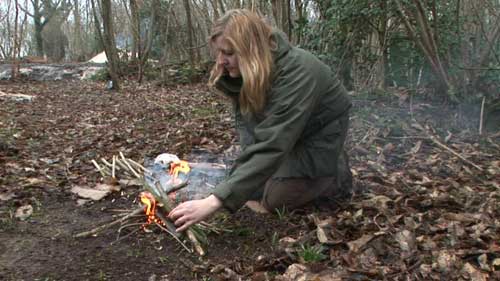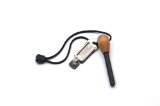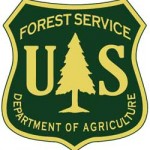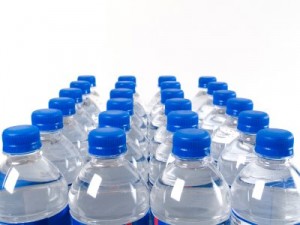Knowing Survival Fire Craft Can Save Your Life
No matter what particular sport we call our own, we practice it to become the best we can be. However, when it comes to a skill that can possibly save our lives, we rarely practice it, because as we all know, a survival situation always happens to somebody else. It will never happen to me, even if I am kayaking a remote coastline, backpacking a distant wilderness, scaling a lonely crag, or driving home in a snowstorm. The ability to start a fire in the wilderness is one of the most basic survival skills, and probably the least practiced.
This is really unfortunate, because building a fire is the one survival skill that will save your life. A fire provides heat for cooking, allows water to be boiled prior to drinking, and can be utilized as a signal or for protection. But most importantly a fire provides warmth, and the ability to stay warm is what will save a life in a survival situation.
Information on fire craft must be gleaned from numerous sources. Review survival literature, dig out your old Scout handbook, read any and all magazine articles on the subject, and search the world wide web. But no matter how well read on the subject, I would not trust my life to just “book knowledge,” no matter how extensive.

To be proficient in firecraft, it needs to be practiced. So how can we practice building a fire under all the adverse conditions that can possibly be encountered while in a survival situation? Practice in those same adverse conditions. Practice firecraft when it’s cold, wet, windy, and also when it’s sunny and warm. Practice in the rain and in the snow. It will be a bit uncomfortable, but the experience gained will be invaluable. The knowledge which is gained might just save a life. One of the quickest lessons learned will be to have more than one method available to ignite the fire.
As any firefighter will tell you, the classic “triangle of fire” consists of heat, fuel, and oxygen. All three items must be available in sufficient quantities to have a fire. In a survival situation, there is a fourth item, balanced precariously on the top of the triangle, and that is patience.
 Patience
Patience
Patience is truly a virtue. It is perhaps the most important aspect of survival fire craft. It is tempting to build a huge roaring blaze, which will quickly deplete your fuel resources, but keep your fire small and comfortable, so you’ll be able to get close for warmth. You must take the time to gather sufficient quantities of your materials. You must choose the right location, prepare that location and construct your fire lay in such a way as to promote combustion. Rushing in your attempts can exhaust your supply of materials as well as your method of ignition.
What is a good location for your fire? Someplace protected from the elements and close to any shelter that you have constructed. While sheltering yourself, remember to shelter your tinder, kindling, and fuel as well. If you are building your fire in snow country, do not build your fire under snow laden branches, because as the heat rises a miniature blizzard will come crashing down onto both you and your fire. If the snow is deep, build a “raft” of green logs as a fire base. In all other conditions, prepare the area by scraping down to the bare earth and pushing all organic and any combustible materials 10 feet away. Gather your materials and take the time to divide them by size or purpose. This will make the fire starting process much easier. A little patience does go a long way. Take your time and get it right, so that you are successful on your first attempt.
 Fuel
Fuel
To properly build a fire, the fuel category will be divided into three sub-groups: tinder, kindling, and fuel. Gather at least three times the amount you think you will need and never start a fire without at least one hour’s worth of fuel on hand. Stories abound of people utilizing a last match to start a fire, then going off to gather more fuel only to return to cold ashes.
Tinder is the beginning of any wilderness fire. It is a material that will burn intensely at the touch of a match or the landing of a spark. It is usually dry and airy, a very light material. Dried grasses, shredded bark, cattail or seed-pod fluff, and bird’s nests are all excellent natural tinders.
The most important thing to realize about tinder is that unless you are 110% positive that you can locate dry tinder in any and all weather conditions, you should bring some from home with you. Personally I use dryer lint, mixed with the charcoal dust that was left over in the charcoal bag. I add a minute amount of vegetable oil to this and store it all very nicely in an old 35 mm film canister. A large amount can be compressed into the canister and I can use as much as needed. Commercially prepared tinders, such as fuel tabs, fire paste, or fire sticks are fine to use. No matter which type—natural, homemade, or commercial—you chose, all have some sort of drawback. Try them all and make your own choice. Learn about them all so there can always be a “Plan B” to fall back upon.
Kindling is small pieces of wood, twigs, and small branches, usually up to the size of your small finger. Anything larger than a pencil should be split, since split wood kindles easier. Kindling burns with a little assistance, which is supplied by the burning tinder. Kindling burns intensely and quickly. It feeds the fire enough to allow the fuel to ignite and burn.
Fuel is what maintains your fire. Ideally, it will be wood about wrist-thick and dry. Again, if it can be split it will burn easier. The smaller the fuel, the hotter and quicker it will burn. “Squaw wood,” the dead dry branches at the base of trees, are excellent for fuel as well as kindling. Wood found on the ground will always be damp. Look up for a dry fuel source. Don’t waste time and energy cutting the wood to length, just place an end in the fire and, as it burns, advance the unburned portions into the fire. Hardwoods burn longer and result in a hot ember bed, whereas softwoods burn faster and give a more intense flame.
Heat
Heat is the category that involves how you will ignite your fire. Once the tinder burns, its heat ignites the kindling and the kindling’s heat ignites the fuel. The heat of the burning fuel is maintained by adding more fuel, continuing the burning process. But how do you initially supply the heat needed to ignite your tinder?
Most people rely upon matches for their fire starting needs. Good quality waterproof, strike anywhere matches are the most economical. Strike anywhere kitchen matches can be waterproofed by dipping them in melted paraffin. The important thing to remember is to scratch the paraffin off before attempting to strike the match. Many people waterproof “safety” or “strike on the box” matches. Unfortunately if the striker panel gets wet, you will be unable to ignite the matches. Never use paper book style matches, as they are moisture magnets and simply do not hold up.

“Light a match, light a candle” is an old woodsman’s adage. A candle stub and waterproof matches can be found in many an old timer’s pockets. Trick birthday candles, the kind that can’t be blown out (magnesium in the wick retains the heat and reignites the flame) are another handy item to have. A candle might seem overly simple, but simplicity works well when a life depends on it.
Many people carry disposable butane lighters that sell for about one dollar as a backup flame source. These must be kept warm if they are to work. If it is very cold and they are stored in a pack, they simply won’t work. They must be carried in an inside pocket to be kept warm by the body’s heat. These disposables also have the explosive potential of a stick of dynamite, so common sense must be used along with them. A windproof lighter such as a “Zippo” works well as a backup. The design has basically remained unchanged since the 1930s. Of course, you must make sure you have enough flint and lighter fluid in the lighter. There are also high pressure butane lighters with piezoelectric ignition. These are on the high end of the cost scale, but are truly wind and waterproof.
An ever reliable source of heat is the old flint and steel. Natural flint is a hard quartz rock and the sparks are minute pieces of the softer steel heated by the friction. These sparks aren’t very hot or long lived. Manmade “flint” is an alloy of various materials. The spark is much hotter and lasts longer.
There are many types on the market. Some come attached to a magnesium bar, which allows scraped magnesium to be available as a tinder. Magnesium ignites readily from a flint and steel spark and quickly attains a temperature of 3600°F, which makes it a very effective fire starter.
Some are packaged with names like Metal Match. One of the most impressive flint and steel units is the Blast Match Fire Starter. This contains a ½” diameter manmade flint with a steel scraper built into the case. This allows one handed operation, which can be useful in the event of injury. Most people have a knife with them, so steel is readily available. Remember to strike with the spine of the blade, as not to wear down the edge needlessly. All flint and steel can be a bit persnickety, so to use and be successful one must practice. Never waste a match when you have flint and steel.
There are numerous other methods of obtaining heat. Steel wool (0000) stretched out and fluffed up, then touched to both terminals of a nine volt battery works very well. Optical methods such as a magnifying lens, or a binocular or telescope lens helps condense and amplify the suns rays, provided the sun is out.
Oxygen
Any fire must have oxygen to burn. Without it you soon have a smoldering smokey source of frustration. The fire lay must be one that allows the fire to “breathe.” Oxygen is as vital to a fire as it is to you and me. The three main choices are the teepee, the lean-to, and the criss-cross fire lays.
In the teepee, the tinder is placed in a pile with kindling piled to form a teepee. Small fuel pieces are stacked in the same manner, around the tinder and kindling. A small opening is left to allow the contents to be ignited and to allow air into the fire’s center. Once burning, larger fuel is stacked in the same manner.
The lean-to fire lay has tinder and kindling placed to one side of a larger log, which acts as a windbreak. Once ignited, fuel is leaned against the larger log over the burning kindling.
 |
The final method is the criss-cross method. Tinder and kindling are placed between two larger logs, set apart a nominal distance. Once the tinder and kindling are ignited and burning fiercely, fuel wood is stacked in alternate directions between the logs.
How To
You have read all the materials you can find on survival fire craft. You carry numerous materials to produce a spark or flame. You gather all the materials, choose a great location, but you are unable to get that fire going. Just add a little more patience and take the time to practice. Experience is the key.
What will experience teach you? If practiced in the worst weather you can find, when your life does not depend on it, you will learn to anticipate what difficulties to expect. And, how to prevent those difficulties.
Your tinder catches, now add some of the patience. Most people are so excited and relieved with any hint of fire that they add too large and too much wood too soon. Blow gently on the tinder and soon it will be burning brightly. Once the tinder is burning brightly, continue to blow gently and add more tinder and small pieces of kindling. Do this very carefully or you will smother the young flame. Blow gently on the base of the fire to help coax it along. As the fire progresses, add larger kindling. This is easy to do since you have divided your materials by size and purpose. Add larger and larger kindling until you have a steady blaze that is sufficient to ignite your smallest fuel. At this point, you shouldn’t have to coax it any farther. Continue to add the fuel to maintain your fire.
Remember to keep your fire’s size where it remains comfortable. Utilize some sort of reflector to bounce back some of the fire’s heat. If you utilize a rock face as a reflector, sit between the fire and the rock face.
Above all remain calm. Panic is your worst enemy. A fire makes an effective signaling tool. If you can, build three signal fires in the shape of a triangle. Three is recognized as a sign of distress. Place the fires approximately 20-30 feet apart. These will be easily seen by any search aircraft during the hours of darkness. During daylight hours, smoke can be seen for miles.
Generate white smoke against dark or green backgrounds, and black smoke against white or snowy backgrounds. White smoke can be generated by the burning of green leaves or pine boughs, black smoke by the burning of products containing hydrocarbons.
Since it is impractical to keep the three fires burning, have them set up and ready to be quickly lit. Remember to protect them from the elements or they will wind up being useless brush piles.
Realistically, it may take a while for you to be located and rescued. However, having a fire will make it considerably less uncomfortable and will probably be the one thing that saves your life.
Additional Research:
  |





Leave a Reply